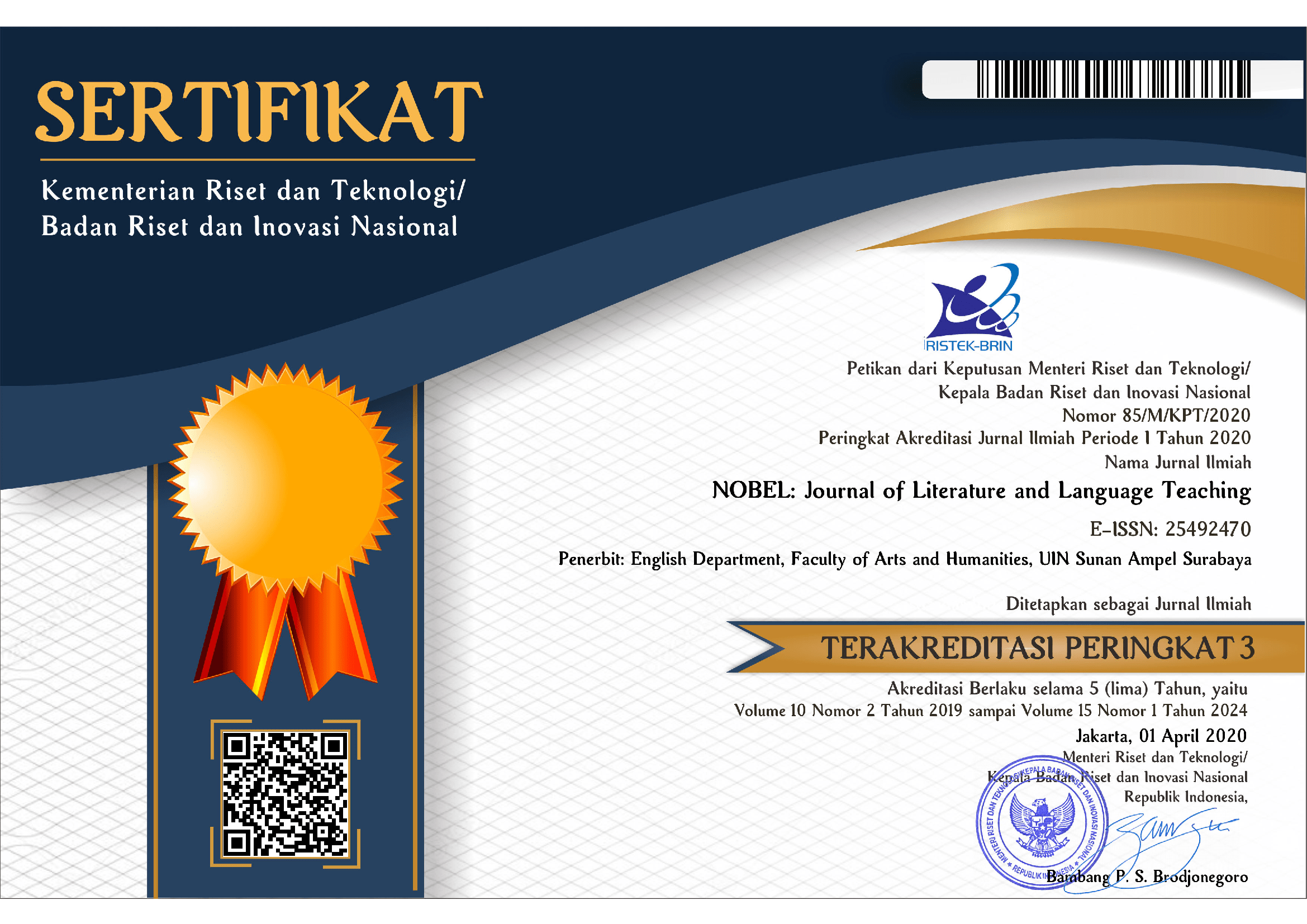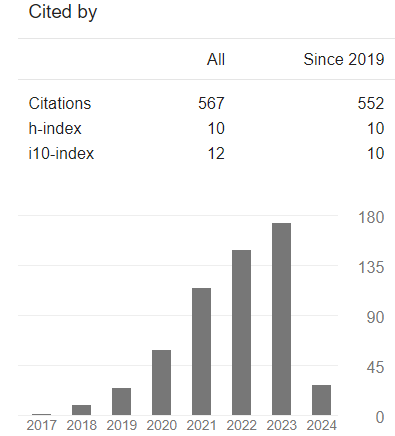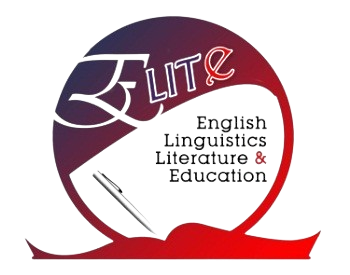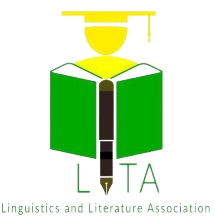Women's Linguistic Features in Two Dramas
DOI:
https://doi.org/10.15642/NOBEL.2016.7.1.49-64Keywords:
women's linguistic features; dramaAbstract
The present paper aims at describing linguistic features of two women who have two different characteristics ” feminine and less feminine” as apparent in Who's Afraid of Virginia Woolf and The Lover dramas. Using Robin Lakoff's (1975) women's linguistic features, the research found out that not all features occur in the dialogues of the two female characters with other characters. Nine features were applied by Martha in Who's Afraid of Virginia Woolf drama and seven features were used by Sarah in The Lover. Based on the analysis of the data, it is uncovered that the use of the women's linguistic features reflects uncertainty and lacking confidence on the part of the women in their conversation.
Downloads
References
Cameron, Deborah. (1990). The Feminist Critique of Language. U. S. A: Routledge.
Cameron, D. (1995). Rethinking Language and Gender Studies: Some Issues for the 1990s. In: Sara Mills (Ed.), Language and Gender: Interdisciplinary Perspectives (pp. 31-44). Horlow: Longman.
Chaika, E.(1994). Language: The social mirror. 3rd edition. Boston: Heinle &Heinle Publishers.
Coates, Jennifer. (1989). Women Talk: Conversation between Women Friends. Oxford: Blackwell
Coates, J. (1995). Language, Gender and Career. In: Sara Mills. (1995). (Ed.), Language and Gender: Interdisciplinary Perspectives (pp.13-30). Horlow: Longman
De Klerk, V. & Hunt, S. (2000). Discourse Domination? The Role of Gender in Seminar Interaction.Southern African linguistics and Applied Language Studies, 18, 73-87.
Eckert, P. (2003). Language and Gender. UK: Cambridge University Press.
Fasold, R. (1990). The Sociolinguistics of Language. Cambridge: B. Blackwell.
Holmes, J. (1992). An Introduction to Sosiolinguistics.UK: Longman.
Holmes, J. Women. (2000). At Work: Analyzing women’s talk in New Zealand Workplaces. Australian Review of Applied Linguistics, 22, 1-17.
Holmes, J. (2001). An Introduction to Sociolinguistics. Second Edition. UK: Longman.
Hornby, A. S.(1989). Oxford Advanced Learner's Dictionary of Current English. Oxford: Oxford University Press.
Kerlinger, F.N. (2010). Foundations of behavioral research (3rd ed), New York: Holt,Rinehart and Winston, (online) www.newsimproved.org/documents/Guide_to_Content_Analysis.pdf, retrieved: July 26.
Kramarae, C. & Treichler, P. A. (1990). Power Relationships in the Classroom. In Susan L. G. (Ed.), Gender in the Classroom Power and Pedagogy (pp. 41-59) Urbana: University of Illinois Press.
Krippendorff, K. (2004). Content Analysis: An introduction to its methodology,London: Sage.
Lakoff, R. (1975). Language and Woman’s Place. New York: Harper and Row.
Miller, J. B. (1992). Conflict Scripts of Men and Women. In Linda A.M. P., Lyn H. T., & Helen M.S. (Eds), Constructing and Reconstructing Gender: The Links among communication, language and Gender (pp. 239-249). Albany: State University of New York.
Pinter, Harold. (1963). The Lover. London: Associated – Rediffusion Television.
Prasad, D. B. (1994). Dowry-related violence: A content analysis of news in selected papers, The Journal of Comparative Family Studies, 25(1): 71-89.
Romaine, S. (1994). Language in Society: An introduction to Sociolinguistics. New York: Oxford University Press.
Rudman, C. (1996). Frames of Reference: How Men and Women Can Overcome Communication Barriers and Increase Their Effectiveness at Work. Princeton: Peterson’s/Pacesetter Books.
Tannen, D. (1998). The Argument Culture: Moving from Debate to Dialogue. New York: Random House.
Thomas, K. (1990). Gender and Subject in Higher Education. Buckingham: Open University Press.
Weber, R.P. Basic content analysis, New Delhi: Sage, (online) www.newsimproved.org/documents/Guide_to_Content_Analysis.pdf (retrieved: July 26, 2010).







